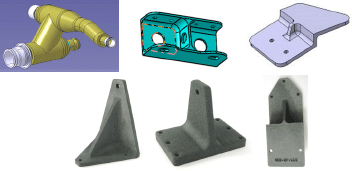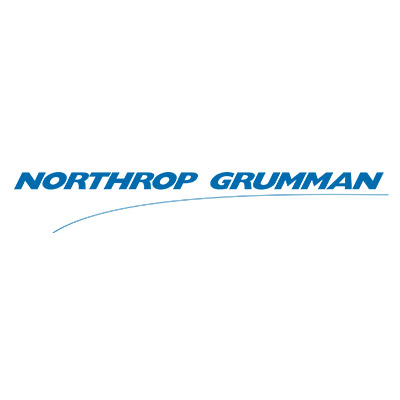


Aerospace systems require parts that can operate at high temperatures and exhibit electrostatic discharge safety. Northrop Grumman Aerospace Systems (NGAS) set out to develop and demonstrate HTLS of a high performance polymer that provides increased material capability in high-temperature areas.
This project seeks to develop U.S. sources of lower cost, high-performance ESD-capable SLS polymer and the infrastructure for domestic source manufacturers. This would provide affordable and flexible manufacturing that ensures repeatable mechanical performance and dimensional accuracy of production grade parts.
Problem
Northrop Grumman Aerospace Systems (NGAS) and several other aerospace companies initiated implementation of fly-away additively manufactured polymer parts in the middle of 2000. The first applications at NGAS utilized Nylon 12 fabricated via Selective Laser Sintering (SLS). Existing nylon materials were limited to non-structural, low-temperature (180˚F max) areas and did not meet the Electro-Static Discharge (ESD) requirements of many aerospace systems. Therefore, the need for additively manufactured ESD-capable materials with service temperatures up to 270°F was identified.
NGAS initially targeted High Temperature Laser Sintering (HTLS) of HP3/PEEK polymer as a replacement for nonstructural subsystem components. However, HP3 cannot be recycled, by industry standards, and material cost has increased by 2.5 times since 2010, driving the need to consider other material sources.
Objective
The objective of the project was to develop U.S. sources of lower cost, high-performance ESD-capable SLS polymer and the infrastructure for domestic source manufacturers. This would provide affordable and flexible manufacturing that ensures repeatable mechanical performance and dimensional accuracy of production grade parts. To transition components to production, the following gaps were to be filled:
- Produce low-cost, high-Tg, ESD-compliant PEKK materials and establish processing/property relationships that meet aerospace requirements
- Develop material allowables of ESD-capable PEKK materials suitable for air and space applications
- Demonstrate part and process repeatability on selected materials and equipment.
Technical Approach
The NGAS team leveraged the well understood methodologies, building block approaches, and transition to production processes previously used in the development and implementation efforts for SLS Nylon 12 and ESD-capable HP3. Team efforts were divided into the following tasks:
- Screening and supply chain verification of PEKK material sources
- ESD material and process development
- ESD testing
- Material testing on ESD PEKK
- Develop material allowable
- Component design, testing, and validation
- Transition-to-production and return on investment (ROI)
- Education and workforce training
Accomplishments
Substantial maturity and manufacturing readiness of HTLS ESD-capable PEKK was demonstrated during this effort, although only one of the intended sources of HTLS PEKK supply was verified and characterized. Supplier Oxford Performance Materials (OPM) fabricated via HTLS over 2100 coupons using multiple EOS P800 machines and raw material lots. Statistically significant properties for virgin ESD-capable PEKK, applicable to both air and space vehicle systems, were developed. Major mechanical properties, including tension, compression, and bearing, were statistically characterized for temperatures ranging from -300°F to +300°F, with a maximum recommended service temperature of +275°F. Relative resistance of both physical and mechanical properties to severe service environments including vacuum, gamma-radiation exposure, and -300°F to +300°F thermal cycling was demonstrated.
Compatibility with typical aerospace fluids was demonstrated as well as an initial assessment of supplementary manufacturing operations including structural adhesive bonding and application-specific coatings. All performance indicated a robust applicability to aircraft and spacecraft secondary and tertiary structure applications.
Recyclability of ESD-capable PEKK was also validated for one reuse (i.e. one reclamation cycle) by testing over 600 mechanical and physical test coupons. It is expected that subsequent reuses are possible, an enabler for future material and process affordability, but were not validated under this effort. A similar level of characterization was performed on neat (unfilled) once recycled (i.e. one reuse) PEKK.
Project Participants
Project Principal

Other Project Participants
- Oxford Performance Materials
- Applied Science & Technology Transfer
- 3D Systems
- Arkema
Public Participants
- U.S. Department of Defense
- National Science Foundation
- U.S. Department of Energy
- National Aeronautics and Space Administration
